SHOOT to THRILL
The Kodak DCS420, DCS460, EOS DCS5 and Nikon E2s digital cameras on test for
MacUser (UK edition) 9 June 1995
by John Henshall
Good as it is, film-based photography has had its
day. Digital photography is faster - no time is spent on film processing
and fewer stages are needed to get your images onto the page. It is also
more stable, in that, unlike film dyes, digital images never fade or change
colour, and the whole process is under your control so there's no need to
send the images out to a laboratory.
Digital photography eliminates the specialist consumables required at each
stage of the photographic process - for example, there is no need to store
film in refrigerators, no need for bikes, to take the film to and from the
lab and no more scanning for reproduction. Duplicate images are identical
to the original in every respect and can be made, on demand, without any
special equipment or material. This, in turn, cuts down the administration
and paperwork that has to be processed by office and accounts staff.
Professional-level digital cameras come in two flavours - those that take
a long time to scan an image, sometimes taking three passes for each colour,
which limits them to still lives; and instant, self-contained cameras suitable
for-real world applications such as photojournalism. It is these cameras
that challenge the dominance of film, and it is these cameras that we have
focused on in this feature.
Unlike analogue electronic cameras, digital devices
carry out the analogue-to-digital conversion inside the camera. All filmless
cameras of today produce images using charge-coupled device (CCD) chips.
CCDs are light-sensitive integrated circuits with a mosaic of thousands
or millions of pixels. Place one in a camera's image plane, where the film
would normally go, and the light falling onto it causes a minute electric
charge to be held in each pixel of the CCD. These charges are analogue,
because they are proportional to the brightness of the light. When read
in an ordered way and amplified, the pixels can be displayed in the same
order, reconstructing the original image.
CCDs elements are arranged in a variety of ways. Linear arrays consist of
light-sensing elements arranged in a single row. Tri-linear arrays are three
such rows, each with a red, green or blue filter in front of it, usually
cemented together. Area arrays have their separate light-sensing elements
arranged in a two dimensional grid pattern. They are suitable for capturing
monochrome images instantly. With suitable filtration they can be used to
analyze colour.
ANALOGUE vs DIGITAL
The difference between analogue and digital is similar
to the difference between a slope and a flight of stairs. In a CCD, the
electrical charge in each element is directly proportional to the light
which falls upon it. The charge can be nothing, corresponding to black,
through to the maximum, corresponding to white, with an infinite number
of possibilities in between. To process this information in a computer,
it has to be sampled digitally - 'quantized'. This process is like
cutting steps into the slope: you can be anywhere at all on a slope, but
only on one precise step of a staircase at a time,which makes it easy to
define precisely where you are.
If you viewed the steps cut into it from far enough away, the hill would
look smooth sided instead of stepped. When two hundred and fifty six steps,
from black to white, produce a digital image, they give the effect of continuous
tone. It takes eight bits to describe two hundred and fifty six discrete
levels, so eight bits are devoted to each pixel of greyscale images.
The major disadvantage of CCDs is that they are colour blind, responding
only to brightness. (But although they cannot discern colours, CCDs are
more sensitive to the red end of the spectrum than to the blue.) Some systems
devote more bits to sampling the CCDs signals. Forty eight bit colour devotes
sixteen bits to each colour, giving 65,536 levels for each, from which the
required two hundred and fifty six can be chosen. This gives a long range,
in excess of film, and greater exposure latitude.
PRODUCING COLOUR
Colour may be analyzed in electronic cameras in
a number of ways. Some cameras use trilinear arrays where three single pixel-wide
rows of CCD elements are arranged across the image, each with its own colour
filter. The signals are read off a line at a time into the computer attached
to these cameras as the arrays are stepped across the image plane. This
technique is used in the highest resolution cameras, such as the Dicomed
and Phase One digital backs. With this type of colour analysis, a large
number of pixels can be crammed onto one long line. Combined with a large
number of minute steps across the image plane, a very high resolution image
can be built up.
The technique resembles that of a flatbed scanner but with a lens forming
the image on the platen. This scanning process takes minutes, during which
time neither camera nor subject can move at all. Lighting must be continuous
and flicker-free. This usually means specialised luminaires, such as high-frequency
fluorescents or HMI (Hydrargyrum Medium arc Iodide).
Another method is to use three area array CCDs glued to an optical beam
splitter which divides the light into its primary colour components. Broadcast
television cameras use this technique, as does the Sony SEPS-1000 digital
camera. It allows a picture to be taken in an instant but triples the electronics,
resulting in a larger, more complex and more expensive camera. The CCDs
need perfect registration. Sometimes the green chip may be offset by half
a pixel to interpolate higher resolution, a technique known as 'spatial
offset'.
Alternatively, the camera may have just one area array CCD which is exposed
three times, in sequence through red, green and blue filters. Like the optical
beam splitter technique, this gives separate red, green and blue analyses
of each point in the image. The three separate files are combined in programs
such as Photoshop. This is the technique used by the Leaf Digital Camera
Back. The quality can be very high but neither subject nor camera can move
between the three exposures. This makes such cameras suitable only for still
life subjects although instantaneous grey-scale images of live subjects
may be captured by not using the filter wheel. Such cameras can only be
used when they are connected to a computer. The Leaf DCB is a back containing
a huge 30mm square area array CCD and is available for cameras such as Hasselblad,
Mamiya and Sinar.
A fourth technique involves depositing a system of microscopic filters in
front of the individual pixels of an area array CCD. This is known as 'striping'.
Colour is obtained by interpolation of the colours of adjacent pixels: if
adjacent red, green and blue pixels all return the same signal value, they
are all made grey. If red returns maximum signal, while green and blue return
nothing, they are all made red. All Kodak, Apple's QuickTake and the Fuji/Nikon
digital cameras use this technique. The disadvantage is that the interpolation
of colour is not infallible and can result in aliasing, but only one exposure
is required so cameras using this technique are instant. Normal photographic
lighting may be used and the cameras are often completely self-contained,
making them easily portable.
Digital imaging should be more productive and give
better quality than film. Since photography is all about capturing life
and action, all digital cameras must eventually be capable of instant exposures.
But to capture an image with sufficient resolution to rival film needs an
area CCD with millions of pixels and each pixel needs at least twenty four
bits to describe its colour and brightness - up to forty eight bits
per pixel to get the latitude of film. This adds up to individual file sizes
of many megabytes. It would be great to be able to shoot such images in
rapid succession, as you can using a film camera with a motor-drive, and
be able to store them on-board in the camera until they are required in
the computer. Unfortunately all this is impossible with today's technology.
No current desktop computer can process so much information so quickly,
let alone a portable battery operated camera.
But in the future digital cameras will have incredible speed of capture,
allowing them to capture both still and moving images. The lens will be
an electronic zoom, with no moving parts. Zooming will be accomplished by
varying the sensor's scanned area, giving angles of view from 1° to
180°. Iris diaphragm and lens hood functions will be by electronic
darkening of the edges of the lens elements. The sensor will be of 'photon
dimension' for extremely high resolution.
Whether it's a high-end system for catalogue photography, a completely portable
system for photo-journalism, or a basic system to enable you to combine
text and images in your wordprocessor documents, you can now capture your
own digital images using cost effective technology.
THE CAMERAS
KODAK DCS420
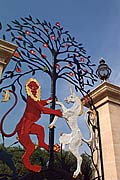 This camera is based on the Nikon N90 35mm body - known in Europe as the F90. It was reviewed fully in MacUser 14 October
1994.
This camera is based on the Nikon N90 35mm body - known in Europe as the F90. It was reviewed fully in MacUser 14 October
1994.
'Raw' images produced by its 1.5 megapixel CCD chip are interpolated to
produce 4.5Mb 24-bit images suitable for reproduction up to quarter page
in a high repro-quality magazine.
The DCS420 is capable of capturing a burst of five images in 2.25 seconds
before it has to 'take a breather' while it saves them to its on-board,
but removable, PCMCIA Type III miniature hard drive. Sixty four images can
be recorded on one 105Mb card.
Images are a bit lacking in colour but this easily cured by increasing saturation
in Photoshop. Try +20. They also benefit from sharpening, which they take
well. Try 'sharpen more' and you'll lift a veil from your images.
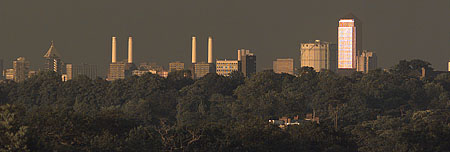
The major picture drawback is noise in the blue channel, where CCDs are
less sensitive. If objectionable - it rarely is because blue contributes
little to the luminance of the picture - noise can be reduced by processing
the blue channel (only) through Agfa's FotoFlow Anti-Noise filter. This
comes 'free' with every Agfa scanner. Ignore Agfa's warning about high values
causing loss of detail and try a setting of 64 levels for starters. The
only problem is that this filter is very s-l-o-w. Oh, please don't spill
the beans to Agfa about how much they're helping Kodak.
- MacUser Mice 4.5
- Pros Bursts of five images at a time can be captured. Takes
full range of Nikon lenses - new and old. Good picture quality.
- Cons Tiny viewfinder image. Wide angles of view impossible.
Blue noise.
- Manufacturer Eastman Kodak.
- Price Camera £8199, 105Mb PCMCIA card £600.
- Contact Kodak 01442 845228.
KODAK EOS·DCS 5
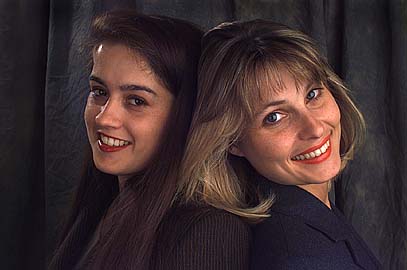
After four digital cameras using Nikon bodies, Kodak
have now produced a digital camera in association with Canon. It is based
on the Canon EOS-1N 35mm body.
The CCD chip and picture quality is identical to the DCS420 but in a very
advanced camera body which many photo-journalists now favour. Auto focus
is virtually silent and an unobtrusive joy to use.
As in the DCS420, the CCD only occupies 15% of the area of a frame of 35mm
film, so the viewfinder image is like a postage stamp in the middle of the
screen.
- MacUser Mice 4.5
- Pros Bursts of five images at a time. Uses Canon's advanced
camera body. Good picture quality.
- Cons Tiny viewfinder image. Wide angles of view impossible.
Blue noise.
- Manufacturer Eastman Kodak in association with Canon.
- Price Camera £8950, 105Mb PCMCIA card £600.
- Contact Kodak 01442 845228.
NIKON E2s
This is a joint venture between Nikon, who built
the special camera body and optics, and Fuji, who supplied most of the electronics.
The same camera is available from Fuji as the DS515. The camera is also
available as the Nikon E2 (Fuji DS505) with less RAM.
Billed as the first digital camera to offer a full-frame viewfinder, this
camera uses a relay lens system to reduce the 24x36mm image produced by
the lens to the small size of a tv format CCD. This results in a quite bulky
camera body. The format is 1.28 to 1, instead of 35mm film's 1.5 to 1 so
the horizontal angle of view of lenses on the digital camera is 0.85 times
the angle which the same lens would give on a 35mm stills camera.
The relay optics give the camera a high basic sensitivity (IS0800) because
the light is concentrated and therefore much brighter at the CCD, resulting
in a higher effective ISO. This benefit is soon lost because the relay optics
limit the light passed by all lenses to a widest aperture of only 6.7. ISO800
at 6.7 is the equivalent of ISO100 at 2.4.
Although the relay system does result in a full-frame viewfinder image,
it limits the Nikon lenses which can be used with the camera, as I found
out the hard way when I used a 28mm 2.8 AF-Nikkor on the camera. All the
images had vignetted corners. Coverage was fine on the supplied 35p;105mm
3.5p;4.5 S zoom. I am a long-time Nikon user and have a wide selection
of older Nikkor lenses, such as the 15mm 3.5, 16mm 2.8 full-frame fisheye
and 18mm 4 - none of which will work with the E2s. Nor will Nikon's
current ultra-wideangles. Pity. All these lenses work fine with the Kodak's
Nikon-body-based digital cameras.

The camera's colorimetry is good, on-board compression of images excellent.
One 15Mb PCMCIA flash memory card can hold 5 interpolated but uncompressed
raw 2.6Mb images in TIFF format, 21 'Fine' format 635Kb images, 43 'Normal'
format 332Kb images, or 84 'Basic' format 170Kb images, JPEG compressed.
Raw CCD images are interpolated up in resolution and sharpened during in-camera
processing. This results in slightly edgy images which will only take limited
further sharpening, though the quality is adequate for the suggested applications.
Browser software displays all the images on the PCMCIA card as thumbnails.
Selected images can then be imported direct into a chosen application. Useful
software but, at £140, it's too pricey. The images files may be opened
directly using applications such as Photoshop, so you only need the browser
if you want to see the thumbnails.

The separate ED-10 PCMCIA card reader, although a PC device, worked extremely
well with the Mac, except that I was unable to acquire the full resolution
TIFF images using it. The JPEG files presented no problem, however.
- MacUser Mice 4.5
- Pros Viewfinder shows full-frame image. Good colour. Excellent
quality on-board JPEG compression. Images can be opened directly in applications
without processing. Colour video output, viewable on colour tv.
- Cons Does not work with all Nikon lenses. Relay optics result
in confusing stops. Bulky camera body. Browser software an extra cost.
- Manufacturer Nikon/Fuji.
- Price Nikon E2s Camera £11360, Nikon E2 Camera £9040,
Fuji DS515 £11970, Fuji DS505 £9650, 15Mb PCMCIA card £930,
Browser software £140, ED-10 PCMCIA Card Reader £635.
- Contact Nikon 0181 541 4440, Fuji 0171 586 5900
KODAK DCS460
This is Kodak's big chip camera. The DCS460's chip
has 2036x3060 pixels in an area four times as large as the chip used in
the DCS420 and EOS·DCS 5 - at three times the price.
Although the 19x28mm chip does not quite fill the 35mm film plane, for the
first time wideangle lenses produce wideangle images on a Kodak digital
camera. Sixteen images can be recorded on a 105Mb PCMCIA Type III hard drive.
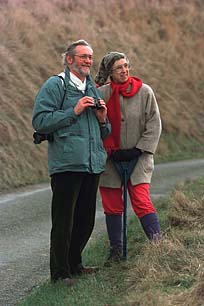
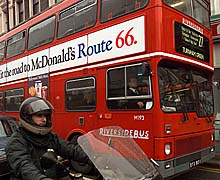
This camera interpolates the 'raw' images produced by its 6 megapixel CCD
chip to produce 18Mb 24-bit images suitable for reproduction up to full
page in a high repro-quality magazine. The image quality, while most impressive,
still benefits from increasing the saturation and some careful sharpening.
It is good that Kodak do not 'enhance' the images coming from their cameras,
leaving this to the user's own preference.
The DCS460 uses the same Nikon F90 camera body as the DCS420. A variant
housed in a Canon body is also expected soon.
The camera is also available as the DCS465 back for Sinar, Hasselblad or
Mamiya cameras.
A state-of-the-art product which produces superb quality images approaching
the quality of 35mm film.
- MacUser Mice 4.5
- Pros Superb image quality. Near full-frame viewfinder image.
Wide angles of view possible.
- Cons Can't be used for rapid shooting.
- Manufacturer Eastman Kodak.
- Price Camera £24950, 105Mb PCMCIA card £600.
- Contact Kodak 01442 845228.
This review first appeared in "MacUser" 9 June 1995.
IMPORTANT NOTICE
This document is Copyright © 1996 John Henshall. All rights reserved.
This material may only be downloaded for personal non-commercial use. Please
safeguard the future of online publishing by respecting this copyright and
the rights of all other authors of material on the Internet.


 This camera is based on the Nikon N90 35mm body - known in Europe as the F90. It was reviewed fully in MacUser 14 October
1994.
This camera is based on the Nikon N90 35mm body - known in Europe as the F90. It was reviewed fully in MacUser 14 October
1994.




